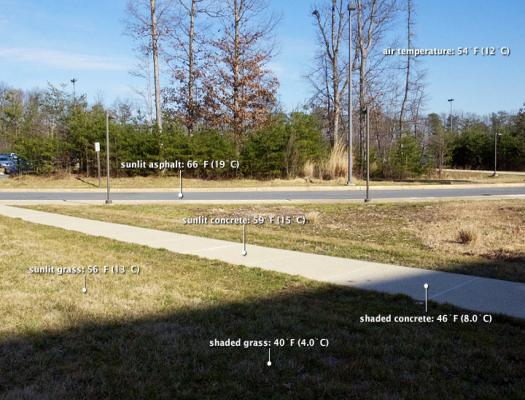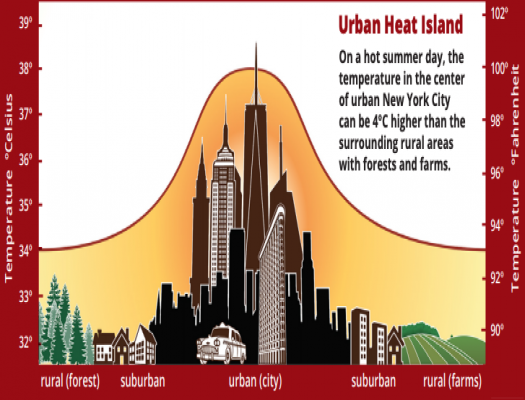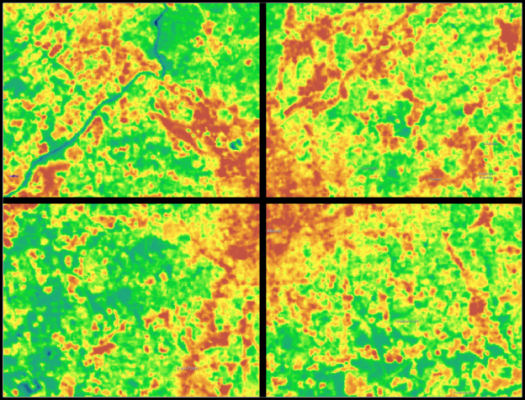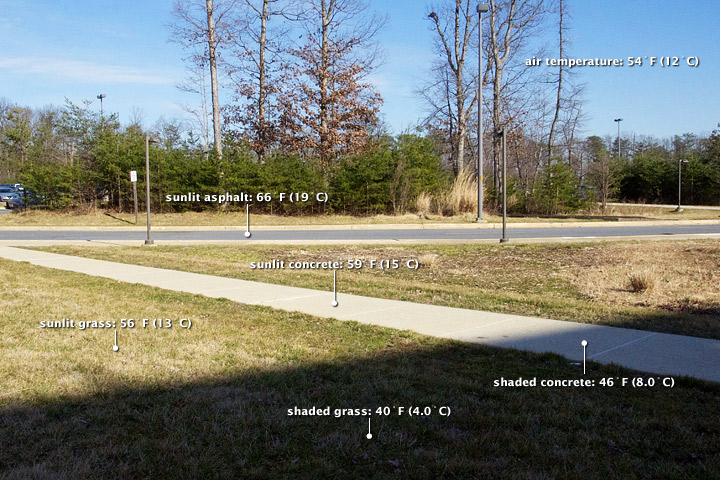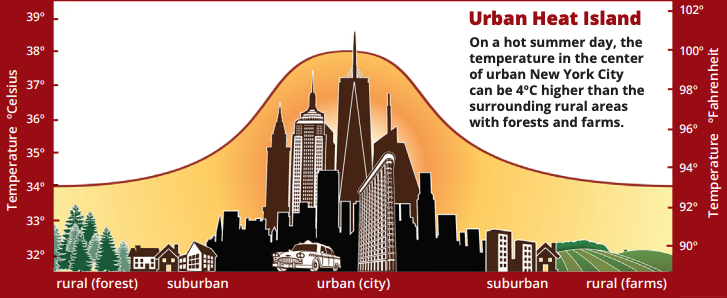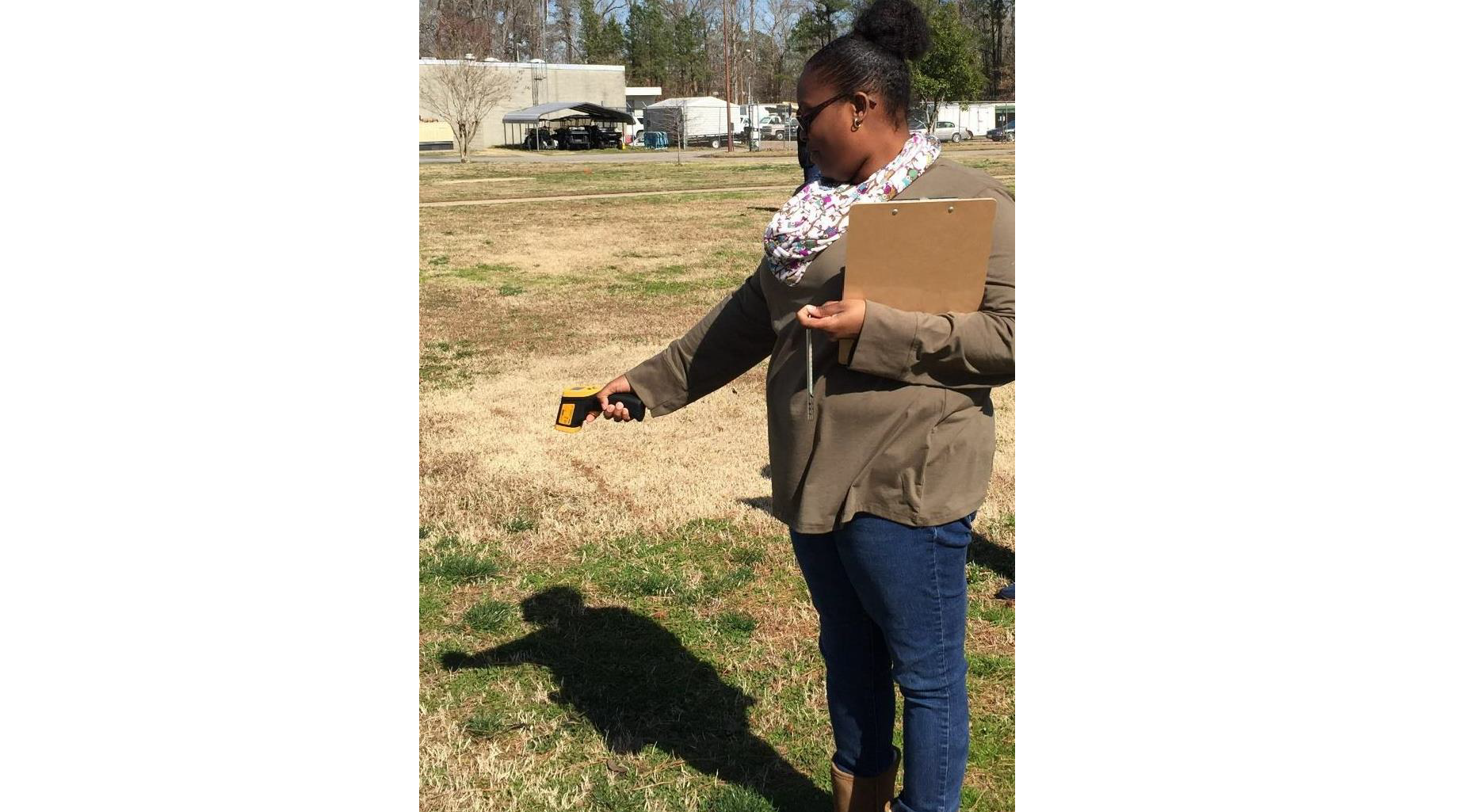An urban heat island is a phenomenon that is best described when a city experiences much warmer temperatures than in nearby rural areas. The sun’s heat and light reach the city and the country in the same way. The difference in temperature between urban and less-developed rural areas has to do with how well the surfaces in each environment absorb and hold heat.
>> Read More >>
Just one moment,
loading Atmosphere...
Featured Mini Lessons
-
-
-
-
-
Grade Level: 6-8
Students will analyze a line graph that shows how the surface temperature and air temperature values change over the course of 24 hours.
Grade Level: 6-8
Students observe the surface temperatures of a variety of surface types found in a suburban environment.
Grade Level: 6-8
Students interpret a graph of surface temperatures taken from city districts and other types of communities.
Grade Level: 6-8
Conduct this modified EO Kids mini-lesson with your students to explore the phenomenon of Urban Heat Island Effect.
Grade Level: 6-8
Students analyze Landsat images of Atlanta, Georgia to explore the relationship between surface temperature and vegetation.
Previous
Next
Grade Level: 6-8
Students will analyze a line graph that shows how the surface temperature and air temperature values change over the course of 24 hours.
Grade Level: 6-8
Students observe the surface temperatures of a variety of surface types found in a suburban environment.
Grade Level: 6-8
Students interpret a graph of surface temperatures taken from city districts and other types of communities.
Grade Level: 6-8
Conduct this modified EO Kids mini-lesson with your students to explore the phenomenon of Urban Heat Island Effect.
Grade Level: 6-8
Students analyze Landsat images of Atlanta, Georgia to explore the relationship between surface temperature and vegetation.
Urban Heat Islands landing page. Explore maps, graphs, data, and related education resources. These resources include lesson plans, mini lessons, activities, and datasets for teachers and students.


